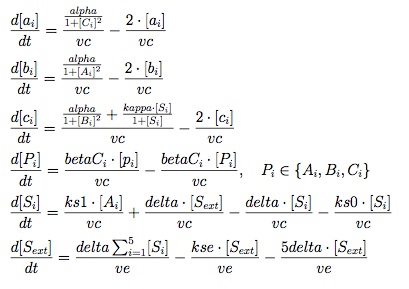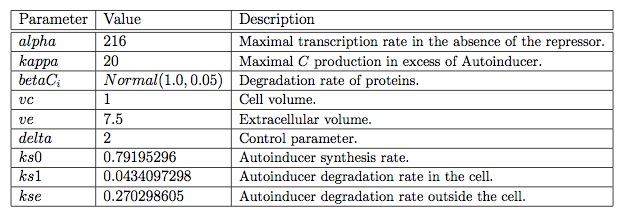Team:Paris/Modeling/biocham
From 2008.igem.org
Contents |
Comparison of two models to obtain a population-synchronus synthetic clock via quorum sensing using Biocham.
Description
In order to produce a synthetic clock that uses quorum sensing to be synchronized at the population level we analyze two approaches. We can use either a single module or a two modules system. In the all-in-one model, each cell needs to use the quorum sensing to have both the cellular clock and the synchronization functionality. In the two models approach, each functionality works independently and the two modules are coupled to reach synchronization. We aim to characterize both approaches to estimate which model is more advantageous to be implemented as an iGEM project.
Objectives
- Describe two different approaches to model a multicellular clock system.
- Implement the models using Biocham.
- Compare the properties of the parameters in both models.
Methods
As a starting point we studied the system proposed by Garcia-Ojalvo et. al., 2003. The system was implemented in Biocham to reproduce the oscillations reported in the article. The equations used are:
The parameters used and the initial conditions are:
Example of a simulation with 5 cells in 100 time units
 "
"



